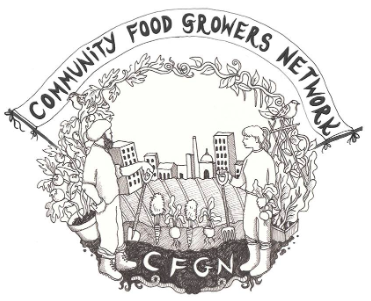Chicken Shops, Community Food Growers and the new London Plan
By Mama D
In Chapter 6 of the London Plan draft, policy E9 proposed that new hot food takeaways with A5 licenses which “generally sell food that is high in calories, fat, salt and sugar, and low in fibre, fruit and vegetables” be denied planning permission “within 400 metres walking distance of an existing or proposed primary or secondary school.” The policy focus is on the government’s fight against obesity as a potential benefit to public health. But how does it fit with ideas and ideals of community food growers and with the notion of ‘fixing a broken food system’? Here, Mama D of Community Centred Knowledge explores the questions that we could be posing around this policy, its context and its implications.
Hot Food Takeaways exist and are popular in response to a number of intersecting factors which determine the food choices Londoners make. A primary, underlying reason, alongside the power of generic corporate advertising, is the economic poverty of particular regions of London. In addition to this, the increase in numbers of those involved in precarious work and the rise of multiple zero-hour contract jobs taken on by low income parent families all contribute to declines in physical – and mental – health and a lack of ‘family –time’ for many across a range of neighbourhoods. The quality of school dinners are often barely acceptable and calorie-laden. Alternatives, like the regional foods offered at takeaways such as Chinese, Caribbean, Italian, Turkish, Lebanese, Indian and the ever popular, mainly Asian run chicken shops, represent inexpensive, accessible and satisfying offerings to their users. It is noted that, alongside many ‘British’ fish and chip shops, most of these A5 licenses are owned or run by those of visible ethnic difference.
Childhood – and adult – obesity and diabetes are indeed representative of a failure to ensure the wide availability and accessibility of healthy food alternatives within a locality – in London, and indeed elsewhere. However, food is but one of the significant factors and there is a lack of developed discussion in the Plan’s support documentation around other deprivation indices which count. For example, access to open space for walking or appropriate venues for indoor or outdoor amenable and safe exercise; opportunities for widespread engagement in community food growing activities and availability of traditional market outlets which sell a diversity of fresh and healthy foods are insufficiently acknowledged key factors. Furthermore, it is not known the extent to which depression, a sense of failure or a lack of future prospects contributes to the use of drugs, alcohol and other addictive substances. Of these, the easiest to come by is high calorie, cheap food.
To quote from Public Health England:
‘If an individual is poor, he or she is more likely to be affected by obesity and its health and wellbeing consequences.’
Those living in deprived areas are also:
- ten times less likely to live in the greenest areas compared with people in the least deprived areas;
- more likely to live near to fast-food outlets, which contribute towards the disparity in levels of obesity across the population; and
- more likely to feel unsafe in their neighbourhood, with consequent negative effects on their health, including a reluctance to take exercise.
The question then to be asked concerns who owns the narrative discourse around policies which impact on these situations and to what extent are local communities and households included in suggesting solutions that might be effective? Also, what is the response of food growing networks and food activist organisations not only to the proposed health objectives in the curtailment of new chicken shops but also to the wider ramifications of the contextual ‘food poverty’ implied in the above? Without good community partnerships, how effective might be the Healthy Catering Commitment for the 7,000 plus existing A5 license owners who will still remain, assuming they are not regenerated away through ‘opportunity area’ developments. Are those articulating and responding to this policy looking at the wider food and health system issues?
A further area of concern is whether the Healthy Catering Commitments will undermine the quality and culture of ethnic foods in ways which reduce access, especially to lower-income or older members of the community. What innovation could these food providers come up with if genuinely consulted and if they had more access to opportunities for community or small scale food growing? What are the barriers and opportunities which relate to these possibilities and what proportion of ‘community’ food growers are drawn from the same ethnic backgrounds which run the A5 food outlets or who frequent them in any locality? Land access for food growing and good contacts for initiating and maintaining food hubs to cater for their communities may represent too high a threshold to overcome for families and individuals in deprived areas, already beaten down by other indices of social injustice.
Could planning initiatives support linkages between the two types of entrepreneur: the grower and the seller? Might there be benefits in trialling locally grown potatoes and other vegetables for use in ‘chicken shops’? Other hot food outlets could also potentially make use of locally grown pak choi, chayote, cabbage, spinach, carrots, okra and tomatoes, all of which are already ingredients in many a healthy ethnic food offering and which are to be found within local food growers harvests. Is this ‘Thyme for change’?
Why is it that corporate chains, which also have a hot food takeaway provision and which may therefore contribute to childhood obesity and diabetes, are nowhere discussed in the policy narrative or in the supporting evidence. Indeed, the nutritional differences between ‘hot counter’ chicken wings and the A5 offers are likely imperceptible. Many of the former do not even operate under the stringencies of A5 licensing. Recently, some chain outlets have provided minimal seating and thus possibly now qualify for A3 licensing, escaping the gaze of local planners, but are equally as frequented by hordes of schoolchildren at lunchtimes, breaks and after school.
For many children, Hot Food Takeaways, as described, may represent not only a lunchtime alternative, but also an after school (or even breakfast) meal in households where there may be few, low cost alternatives. The uptake of ‘chicken shop’ provisions cannot be viewed in isolation from child food poverty statistics, which of course, relate to discussions on family poverty, regional deprivation, closure of traditional markets and access to good, culturally appropriate foods by working class families. Of course, not to be overlooked are traditions of good food even where there is poverty because of food practices which value sound offerings of wholesome vegetarian and vegan food, as a tradition, despite the stereotypes applied to these communities by mass media and even arising out of planners perspectives:
‘Local planning authorities and planning applicants could have particular regard to the following issues:
- proximity to locations where children and young people congregate such as schools, community centres and playgrounds
- evidence indicating high levels of obesity, deprivation and general poor health in specific locations
- over-concentration and clustering of certain use classes within a specified area
- odours and noise impact
- traffic impact
(London Plan topic paper: Hot food takeaways January 2018, italics mine)
The intersection of race and class further disadvantages lower income families who are often on the receiving end of these implied racial stereotypes. The media tropes of working class immigrant children and adults hanging around hot food takeaways owned by their brethren and being perceived as anti-social and generating offensive smells, noise and waste is an attribution as old as class distinctions have been in place. This situation is further compounded by fear and distrust of ‘foreign’ others. To what extent does this play into highlighting these A5 providers as the main cause of poor public health?
The relationships between the different amenities relating to health, social welfare and associated infrastructure, and local food economies, especially from a local community perspective need to be considered in the light of the potential impact of these A5 license curtailments. What might be the impact of the A5 license reductions in the context of gentrification, in which traditional foods vie with new ’foodism’? This draws attention to a role for the diversity of local communities in borough and London wide planning decisions to ensure more just decision making. In the absence of this, larger food corporations, with bigger advertising budgets, compete for the attention of school children in the same localities as smaller A5 food outlets.
It is also not known what relationships may exist between the mainly Asian owned chicken shops and local grocery outlets in terms of ownership, management or staffing, this too needs to be explored to optimise both local amenity value and a variety of food provision in what might otherwise be a food desert.
As A3 licenses have not been singled out in the way the A5 have been, sitting and eating within these food outlets or transporting home a greasy bag with half of a chicken may become more acceptable ways of becoming obese. We ask, is this a matter then of the politics and power over poverty?
Many of these issues may not even seep into the consciousness of policy makers who live more privileged lifestyles and for whom there are more food options both locally and within a short car ride away. They are also perhaps able to afford living in areas where food deserts don’t exist and ‘chicken shops’ barely feature: instead patisseries, niche delicatessens and wine sellers are in abundance but receive no negative nutrition-critical focus.
There is a need for carefully controlled, integrated impact assessments to be carried out with full community involvement to further study the implications and opportunities this policy has for the affected communities and their environments as well as for the unexplored opportunities which exist. The development of more comprehensive, inclusive and well-designed lifetime neighbourhoods also offer a way forward to show how health affirming change can be implemented, especially in the more deprived communities of the city and which address food poverty in a multitude of ways.
The full policy to which this article is written in response can be found at https://www.london.gov.uk/what-we-do/planning/london-plan/new-london-plan/draft-new-london-plan/chapter-6-economy/policy-e9-retail-markets-and-hot-food-takeaways.

